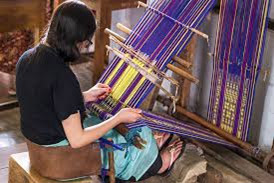
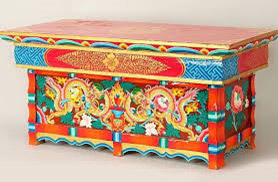
Wood Craft in Sikkim was originally patronized by the Buddhist monasteries, where a huge range of wooden things used to be craved like wood plaques, lanterns, utensils, Buddhist symbols, and various other things for daily use. However, one of the most prominent wood-carved objects are Choktse tables, from Gangtok. These small foldable and portable tables can be found in every Sikkim household. These tables are carved in an exquisite pattern of flowers, Buddhist symbols, or sceneries with the help of paper stencils and painted in different bright colours and polished thoroughly to give them a shine.
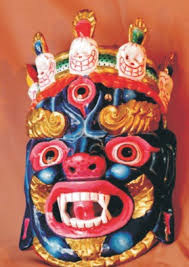
Mask-making is another ancient craft in Sikkim. Earlier it was confined to the walls of the monasteries however with time locals have started making masks as well in Sikkim. These face masks are made of softwood or clay and with paper pulp. Masks often depict gods, goddesses and animals in serene or angry expressions generally painted in bright colours of yellow, blue, green, orange or white. These masks are made and worn by people during festivals, religious ceremonies, and dances especially, during Cham which is a ceremonial dance done by the lamas in monasteries. Nowadays, these masks are also used as a wall hangings as a popular craft in Sikkim.
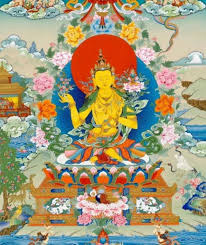
Thangka, is a word literally means “the thing one unrolls.” It is a painted or embroidered banner hung in the monastery or carried by lamas for ceremonial processions. The presence of the Thangka painting can be dated back to the ancient cave painting. Thangka paintings often consist of natural elements along with multiple motifs like Lotus, flowers, banners, fish, and dharma wheel with each representing significant meaning. Thangkas in Sikkim Vary in the usage of colours, design of facial expressions of deities, decorations, and background scenery. They even have a slightly different theme, though in both the styles Buddha and Boddhisatva are prominent Tibetan thangkas have depictions of Rinpoche and Dalai Lama in the foreground whereas Sikkimese thangkas depict Chogyal or the last King of Sikkim along with Rinpoche and Monks.
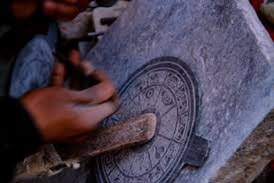
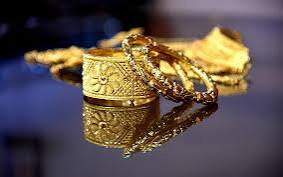
Sikkim’s gold jewellery is a blend of styles and motifs influenced by the Bhutia, Nepali, and Lepchas communities. The Sikkimese love for nature is represented in this jewellery with patterns influenced by nature like plants and flowers or religious symbols like a mandala. Semi-precious stones and gems like turquoise, lapis lazuli and red coral are used in the pieces of jewellery. Sikkimese traditional jewellery includes elaborate neckpieces called Rani Haar, Khao, Kantha and Naugedi along with earrings, rings and bracelets. The complex techniques involved in the traditional jewellery making of Sikkim are passed through generations in Sikkim.

Sikkimese carpets are hand-knotted and woven in fixed vertical looms which are kept standing with the support of a wall and done mainly by the women of Bhutia in Sikkim. Carpet designs are Tibetan patterns of mythical birds, flowers like the lotus, snow lions, and eight Buddhist lucky signs.
Another well-known craft in Sikkim is blanket weaving which varies from Lepcha weaving in its pattern and community. Blanket weaving is done by the Nepalese women by sheep wool.